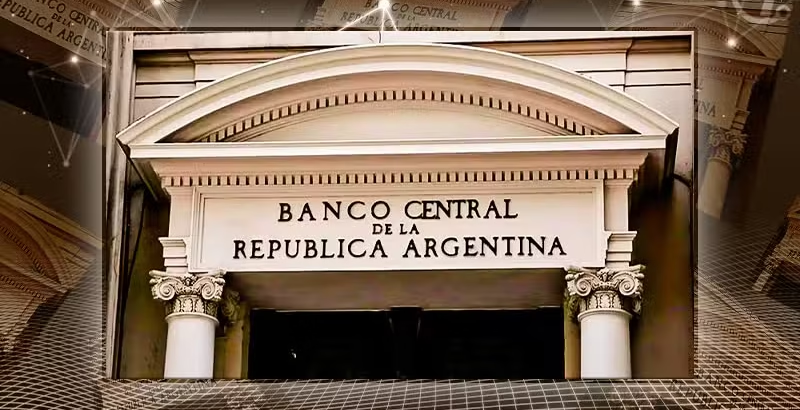The Central Bank of Argentina
Introduction
The Central Bank of the Republic of Argentina (Banco Central de la República Argentina, BCRA) plays a pivotal role in the nation’s financial and economic system. Since its establishment in 1935, the BCRA has served as the country’s monetary authority, tasked with ensuring financial stability, regulating the banking system, and implementing monetary policies to achieve sustainable economic growth. This essay delves into the history, features, organizational structure, and contemporary challenges faced by the BCRA.

Features of the Central Bank of Argentina
The BCRA stands out for its unique blend of responsibilities, combining monetary regulation, financial system oversight, and public policy implementation. Among its key features:
- Sovereign Monetary Authority: The BCRA controls Argentina’s monetary base and oversees the issuance of the Argentine peso, ensuring economic stability.
- Lender of Last Resort: The bank provides liquidity support to financial institutions during crises.
- Dual Objective: Balancing inflation control with economic growth.
- Regulatory Role: Supervising banks and financial institutions to maintain a robust and transparent financial system.
- Currency Management: Managing the exchange rate and foreign reserves to stabilize the peso.
History of the Central Bank of Argentina
The Central Bank was created on May 28, 1935, during a period of global economic instability following the Great Depression. It replaced the Caja de Conversión, a monetary entity that lacked the flexibility needed for modern economic challenges. The BCRA was inspired by the structure and operations of the Bank of England and was established to strengthen Argentina’s monetary system.
Initially, the BCRA was a mixed entity, with a combination of private and public ownership. However, in 1946, under President Juan Domingo Perón, the bank was nationalized, becoming a fully state-owned institution. Over the decades, the bank’s policies have been influenced by various political regimes, reflecting the shifting priorities of Argentina’s economic agenda.
Key milestones in the BCRA’s history include:
- 1946: Nationalization under Perón.
- 1970s-1980s: Hyperinflation and currency crises.
- 1991: Adoption of the Convertibility Plan, pegging the peso to the U.S. dollar.
- 2001: Economic collapse and abandonment of dollar parity.
- Present: Ongoing challenges in stabilizing the economy amidst high inflation and debt pressures.
About Us
The Central Bank of Argentina is committed to serving as the cornerstone of the country’s monetary and financial systems. Guided by principles of transparency, efficiency, and adaptability, the BCRA aims to promote stability and sustainable development.
Mission
The mission of the BCRA is to preserve monetary and financial stability while promoting economic development. The bank seeks to achieve its objectives by regulating the monetary base, managing inflation, and ensuring the soundness of the banking sector.
Vision
The BCRA envisions a stable and inclusive economy, with a resilient financial system that fosters trust among citizens, businesses, and global investors.
Values
- Transparency: Commitment to openness and accountability in operations.
- Independence: Safeguarding autonomy in decision-making.
- Innovation: Adopting modern practices to address evolving challenges.
- Stability: Ensuring economic and financial stability.
- Inclusivity: Promoting policies that benefit all segments of society.
Headquarters
The headquarters of the Central Bank of Argentina is located in Buenos Aires, the capital city of the country. The iconic building at 266 Reconquista Street stands as a symbol of Argentina’s financial authority. Its architecture reflects neoclassical influences, embodying the institution’s stability and permanence.
List of Governors
Since its inception, the BCRA has been led by a series of prominent economists and policymakers. Some notable governors include:
- Enrique Gil (1935-1946) – The first president who laid the foundation for the bank’s operations.
- Raúl Prebisch (1935-1943) – A key figure in early economic policy and later a renowned development economist.
- Adolfo Diz (1976-1981) – Oversaw monetary policy during the military dictatorship.
- Domingo Cavallo (1991) – Architect of the Convertibility Plan.
- Miguel Ángel Pesce (2019-present) – Current governor addressing inflation and debt crises.
Founded
The Central Bank of Argentina was officially established on May 28, 1935, under Law 12,155, during the presidency of Agustín P. Justo.
Present Reserve
As of the latest data, Argentina’s foreign exchange reserves fluctuate due to economic pressures, including external debt repayments and currency interventions. Currently, reserves are estimated at approximately $20 billion, a figure that often sees significant variation.
Regulation and Monetary Policy
The BCRA operates under the framework of the Law of Financial Institutions (Law 21,526) and the Central Bank Charter. Its primary regulatory functions include:
- Setting reserve requirements for banks.
- Supervising and licensing financial institutions.
- Implementing anti-money laundering measures.
Monetary policy at the BCRA focuses on:
- Controlling inflation through interest rate adjustments.
- Managing money supply to stabilize the economy.
- Intervening in currency markets to prevent excessive volatility.
Departments and Functions
The BCRA is divided into several specialized departments, each responsible for distinct functions:
- Monetary Policy Department: Develops and implements strategies to control inflation and ensure liquidity.
- Supervision and Regulation Department: Monitors financial institutions for compliance with regulations.
- Foreign Exchange Department: Manages currency reserves and interventions in the forex market.
- Public Debt Management: Oversees sovereign debt issuance and repayment.
- Research and Statistics: Provides economic analysis and forecasts to guide policy decisions.
- Communications Department: Engages with stakeholders and disseminates information transparently.
Exchange Rate Policy
Argentina’s exchange rate policy has shifted between fixed, managed, and floating regimes over the years. The BCRA actively intervenes in foreign exchange markets to stabilize the peso, especially during periods of volatility. Maintaining an appropriate exchange rate is critical to controlling inflation and ensuring external competitiveness.
Number of Employees
The Central Bank employs approximately 2,500 staff members, including economists, financial analysts, legal experts, and administrative personnel.
Conclusion
The Central Bank of Argentina is a cornerstone institution in the nation’s economic architecture. Despite facing significant challenges, including high inflation, debt burdens, and currency instability, the BCRA continues to adapt its policies to navigate complex domestic and global environments. With a clear mission and robust values, the bank remains committed to fostering economic stability and growth.
Through effective regulation, prudent monetary policy, and strategic leadership, the BCRA strives to fulfill its mandate and restore confidence in Argentina’s financial system. However, its success will depend on maintaining independence, adopting innovative strategies, and ensuring transparency in operations.

